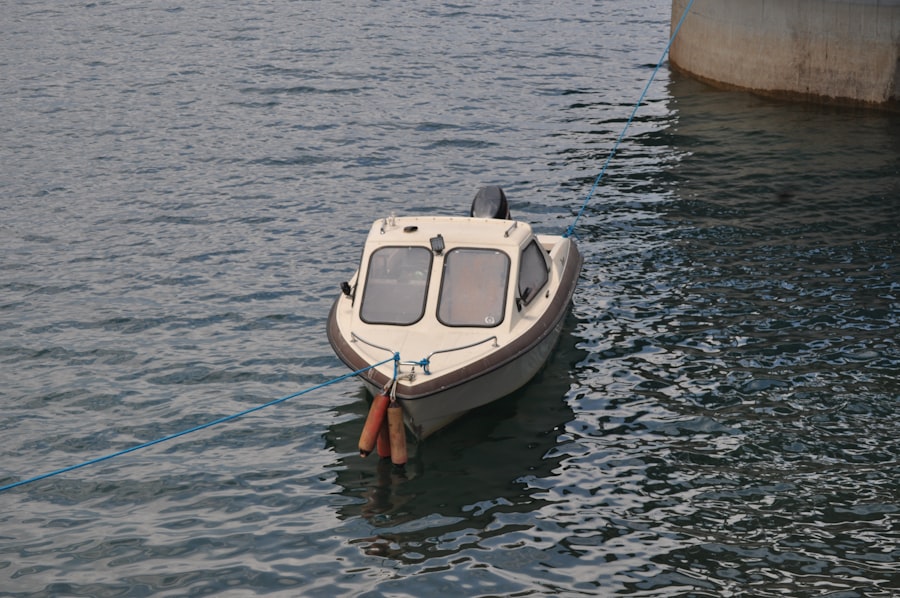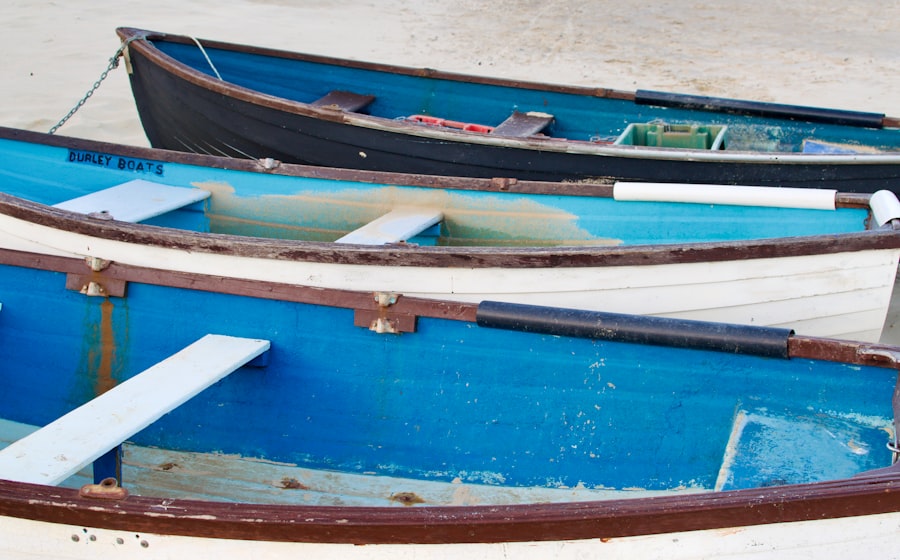Before embarking on the journey of purchasing a boat, thorough research and careful budgeting are essential steps that can significantly influence the overall experience. The first phase of this process involves understanding the various types of boats available in the market, their intended uses, and the associated costs. This knowledge not only helps in narrowing down options but also aids in setting realistic expectations regarding what can be afforded.
For instance, a small fishing boat may cost significantly less than a luxury yacht, and understanding these price ranges is crucial for effective budgeting. Budgeting for a boat goes beyond just the initial purchase price. Prospective boat owners must consider additional expenses such as registration fees, taxes, maintenance costs, insurance premiums, and storage fees.
A comprehensive budget should also account for fuel costs, equipment upgrades, and potential repairs. By creating a detailed financial plan that encompasses both the upfront and ongoing costs, buyers can avoid unexpected financial strain and ensure that their boating experience remains enjoyable rather than burdensome.
Key Takeaways
- Thorough research and budgeting are essential before purchasing a boat.
- Different boat types serve various purposes; choose one that fits your needs.
- Inspect the boat’s condition carefully to avoid costly repairs later.
- Work with reputable sellers to ensure a trustworthy transaction.
- Plan for financing, insurance, and ongoing maintenance to enjoy your boat fully.
Types of Boats and Their Uses
The boating world is diverse, with a wide array of vessels designed for specific activities and environments. Understanding the different types of boats available is crucial for making an informed decision. For example, if one’s primary interest lies in fishing, a center console boat or a bass boat may be ideal due to their design and functionality tailored for angling.
These boats often feature ample storage for gear and are built to navigate shallow waters effectively. On the other hand, those seeking leisure and relaxation might gravitate towards pontoon boats or cabin cruisers. Pontoon boats are known for their stability and spaciousness, making them perfect for family outings or social gatherings on the water.
Cabin cruisers offer the added benefit of overnight accommodations, allowing for extended trips on lakes or coastal waters. Sailboats present another category altogether, appealing to those who enjoy the art of sailing and the tranquility it brings. Each type of boat serves a unique purpose, and understanding these distinctions is vital for selecting the right vessel that aligns with one’s lifestyle and recreational goals.
Condition and Inspection

Once a potential buyer has identified a type of boat that suits their needs, the next critical step is assessing its condition through a thorough inspection. Whether purchasing new or used, understanding the boat’s physical state can prevent future headaches and costly repairs. For used boats, this process becomes even more crucial as wear and tear can significantly impact performance and safety.
A comprehensive inspection should include checking the hull for any signs of damage or stress, examining the engine for leaks or corrosion, and ensuring that all electronic systems are functioning properly. In addition to a visual inspection, it is advisable to conduct a sea trial. This involves taking the boat out on the water to evaluate its performance under real conditions.
During this trial, potential buyers should pay attention to how the boat handles, its speed capabilities, and any unusual noises that may indicate underlying issues. Engaging a marine surveyor can also provide an expert opinion on the boat’s condition, offering peace of mind before making a significant investment. This step is particularly important for older vessels where hidden problems may not be immediately apparent.
Finding a Reputable Seller
| Metric | Description | Typical Range | Importance |
|---|---|---|---|
| Seller Rating | Average customer rating based on reviews | 1 to 5 stars | High |
| Number of Reviews | Total count of customer feedback entries | 10 to 10,000+ | High |
| Response Time | Average time taken to respond to customer inquiries | Minutes to 24 hours | Medium |
| Return Policy Duration | Number of days allowed for product returns | 7 to 60 days | High |
| Verified Seller Status | Whether the seller is officially verified by the platform | Yes / No | High |
| Shipping Time | Average time from order to delivery | 1 to 14 days | Medium |
| Customer Support Availability | Hours per day customer support is available | 0 to 24 hours | Medium |
Finding a reputable seller is paramount in ensuring a smooth purchasing experience. Whether buying from a dealership or an individual seller, due diligence is necessary to verify their credibility. One effective way to gauge a seller’s reputation is by seeking reviews or testimonials from previous customers.
Online platforms and boating forums can provide insights into others’ experiences with specific sellers, highlighting any red flags or commendable practices. Additionally, it is beneficial to check if the seller is affiliated with recognized boating organizations or associations. Membership in such groups often indicates a commitment to ethical practices and customer satisfaction.
When dealing with private sellers, asking for maintenance records and any previous survey reports can also provide valuable information about the boat’s history and care. Establishing trust with the seller not only enhances the buying experience but also lays the groundwork for future interactions regarding maintenance or upgrades.
Negotiating the Price
Negotiating the price of a boat can be one of the most daunting aspects of the purchasing process, yet it is also an opportunity to secure a better deal. Knowledge is power in negotiations; therefore, being well-informed about market prices for similar boats can provide leverage during discussions. Researching comparable models in terms of age, condition, and features allows buyers to present reasonable offers based on factual data rather than emotional impulses.
When entering negotiations, it is essential to approach the conversation with confidence but also with respect for the seller’s position. Starting with a lower offer can open up dialogue without offending the seller; however, it is crucial to remain flexible and willing to compromise. Highlighting any issues discovered during inspections can also serve as valid points for negotiating a lower price.
Ultimately, successful negotiation hinges on clear communication and an understanding of both parties’ needs and limitations.
Financing and Insurance

Once an agreement on price has been reached, prospective boat owners must consider financing options if they do not plan to pay in full upfront. Many financial institutions offer loans specifically tailored for boat purchases, often with competitive interest rates and terms that can accommodate various budgets. It is advisable to shop around for financing options to find the best rates and terms that suit individual financial situations.
In addition to financing, securing insurance is another critical aspect of boat ownership that should not be overlooked. Boat insurance protects against potential damages or liabilities that may arise while on the water. Factors influencing insurance premiums include the type of boat, its value, intended use, and even the owner’s boating experience.
Consulting with an insurance agent who specializes in marine coverage can help buyers understand their options and select a policy that provides adequate protection without breaking the bank.
Maintenance and Upkeep
Owning a boat comes with responsibilities that extend far beyond the initial purchase. Regular maintenance is essential to ensure longevity and optimal performance of the vessel. This includes routine tasks such as cleaning the hull, checking fluid levels, inspecting electrical systems, and maintaining safety equipment like life jackets and fire extinguishers.
Seasonal maintenance checks are also crucial; for instance, winterizing a boat before colder months can prevent damage from freezing temperatures. Moreover, keeping detailed records of all maintenance activities not only helps in tracking expenses but can also enhance resale value down the line. Prospective buyers often look favorably upon well-documented maintenance histories as they indicate responsible ownership.
Engaging professional services for more complex tasks such as engine repairs or hull inspections can also be beneficial in maintaining safety standards and ensuring that all systems function correctly.
Enjoying Your New Boat
After navigating through research, budgeting, inspections, negotiations, financing, and maintenance considerations, it’s finally time to enjoy your new boat. The thrill of being out on the water—whether it’s fishing at dawn, cruising with friends on a sunny afternoon, or simply relaxing while anchored in a serene cove—makes all the effort worthwhile. Each outing presents an opportunity to create lasting memories with family and friends while exploring new destinations.
Moreover, owning a boat opens up avenues for social engagement within local boating communities. Joining clubs or participating in events can enhance the boating experience by connecting with like-minded individuals who share similar passions for water activities. Whether it’s participating in fishing tournaments or attending boat shows, these interactions can enrich one’s boating journey significantly.
Ultimately, embracing the joys of boating fosters not only personal enjoyment but also strengthens bonds with loved ones through shared adventures on the water.


